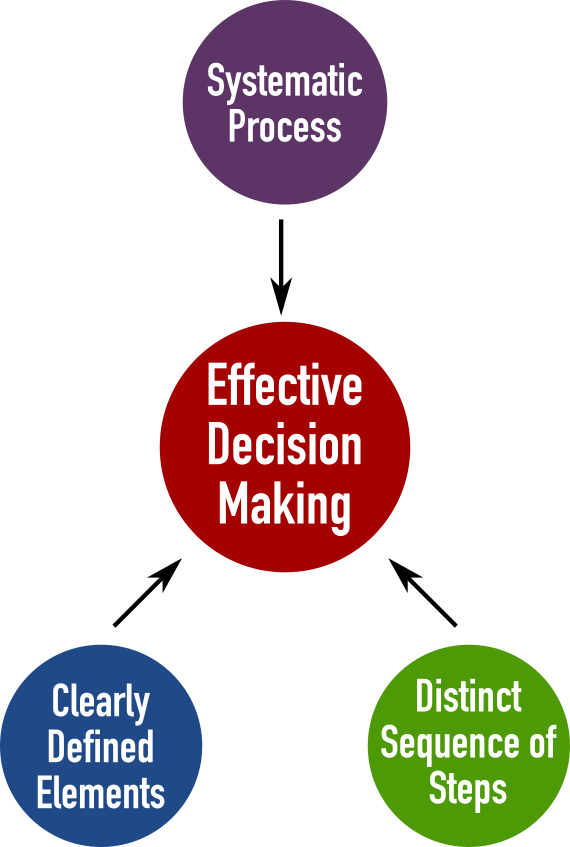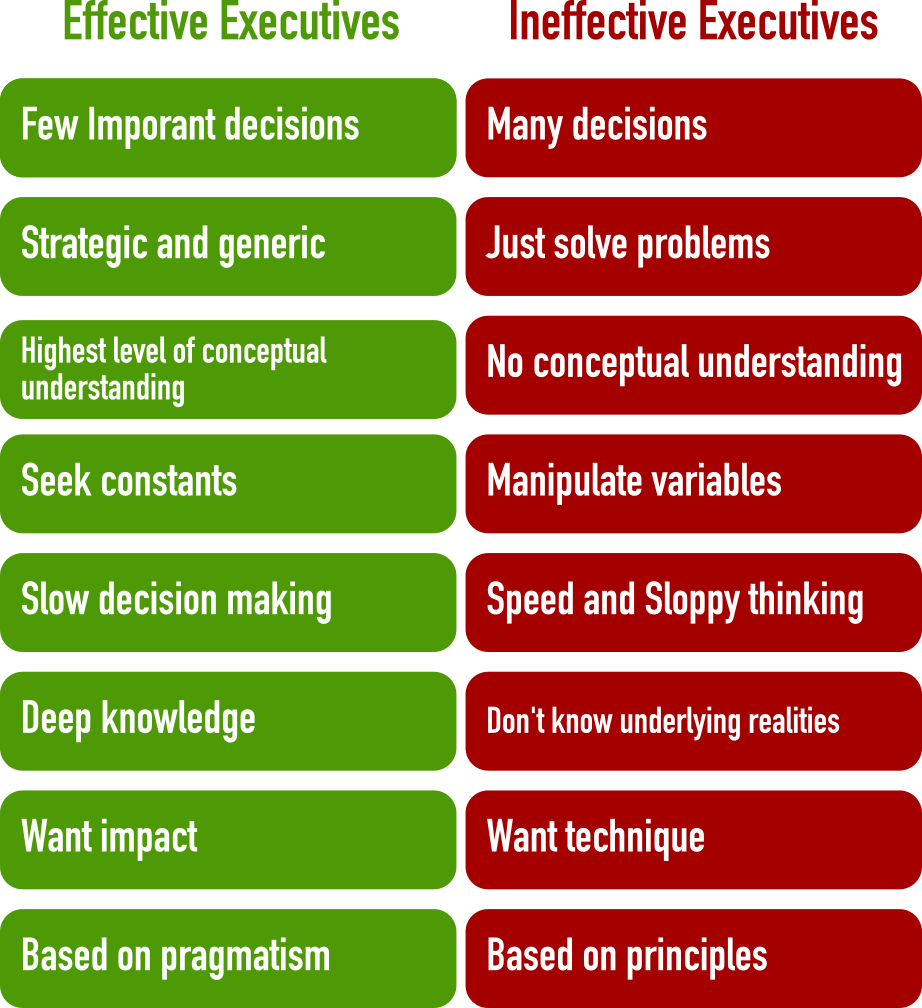8 key differences between effective and ineffective decision makers
The other day I was just skimming through an wonderful piece of work by Peter F. Drucker called “the effective executive”. One of the important abilities of an effective executive as suggested by Drucker, is the ability to make effective decisions. He highlights some key differences between effective decision makers and the ineffective ones.
Decision-making is only one of the tasks of an executive. It usually takes but a small fraction of his time. But to make decisions is the specific executive task. Decision-making therefore deserves special treatment in a discussion of the effective executive.
Only executives make decisions. Indeed, to be expected—by virtue of position or knowledge—to make decisions that have significant impact on the entire organization, its performance, and results defines the executive.
Effective executives, therefore, make effective decisions. They make these decisions as a systematic process with clearly defined elements and in a distinct sequence of steps.

Let’s take a look at some of the crucial characteristics between effective and ineffective decision making.
1. Not many but few important decisions
Effective executives do not make a great many decisions. They concentrate on the important ones. They just operate on the qualitative layer rather than just marching forward on the quantitative road as well.

2. It’s not just about solving problems
They try to think through what is strategic and generic, rather than “solve problems.” According to them, it’s not just fire-fighting or damage control, rather it is prevention and control, coming up with a long-term option to deal with homogeneous problems in future.

3. On the highest level of conceptual understanding
They try to make the few important decisions on the highest level of conceptual understanding. Conceptual understanding is knowing more than isolated facts and methods. The successful executive understands the core ideas, and has the ability to transfer their knowledge into new situations and apply it to new contexts. This deep conceptual understanding is a key principle for effective executives.

4. Seek the invariants
They try to find the constants in a situation. They feel the significance of working with the immovable parts of any problem is the most effective way in decision making. It’s better to hold onto something one has already than to risk losing it by trying to attain something better.

A bird in the hand is worth two in the bush.
5. It’s not about speed.
They are, therefore, not overly impressed by speed in decision-making. Rather they consider virtuosity in manipulating a great many variables a symptom of sloppy thinking.
Sloppy thinking is something we’ve all been “diagnosed” with at some point in our lives. We get distracted, forget to ask the right questions, ignore the data, shoot from the hip and jump to conclusions.

6. What it’s all about?
They want to know what the decision is all about and what the underlying realities are which it has to satisfy. An effective executive requires a deep knowledge about the decision and it’s implications in the real world without just making the decision and move on, in the theoretical realms.

7. Techniques are for amateurs
They want impact rather than technique, they want to be sound rather than clever. The Expert never cares about the technique, he knows that there is not one single technique, recipe or formula to make the right decisions for every problem. He knows a great many techniques, and also to improvise those at any point of time to make the effective decisions.

8. Principle vs Pragmatic
Effective executives know when a decision has to be based on principle and when it should be made on the merits of the case and pragmatically. They know that the trickiest decision is that between the right and the wrong compromise and have learned to tell one from the other.

Good intentions
They know that the most time-consuming step in the process is not making the decision but putting it into effect. Unless a decision has “degenerated into work” it is not a decision; it is at best a good intention. This means that, while the effective decision itself is based on the highest level of conceptual understanding, the action to carry it out should be as close as possible to the working level and as simple as possible.
Let’s summarize the differences between effective and ineffective decision making.

References:
- The Effective Executive by Peter F. Drucker
- https://www.kepner-tregoe.com/lp/stop-sloppy-thinking/
Image credits
- Pictures from Unsplash
- Photo by Marvin Ronsdorf on Unsplash